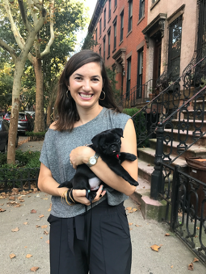White Smog
My sixth year teaching I moved to teach in a new school in Cobble Hill, Brooklyn. The school population was both racially and socio-economically diverse. I had previously taught in Brownsville, Brooklyn at a racially segregated school. I had never taught a white student before. My new class was the ideal image of an integrated classroom and with it I was confronted with my own biases. I would have quickly stated that I treat all children, regardless of race or class, equally. What a naive thought. Little did I understand how imprinted I was by the biases and stereotypes of our White supremacist culture. As Lisa Delpit wisely stated, “If we live in the USA, we are racism breathers.” The question becomes whether or not we recognize the air we breathe. For so many years, I never did.
One moment of stark awakening for me was after reflecting on my different treatment for two students who both repeatedly left their homework at home. Sarah* was a white female student from an affluent background, her parents were divorced and she often forgot her homework folder between households as she moved between her mom and dad’s house throughout the week. Alex* was a black male student from a low income background, he lived with his mom who worked long hours as a police officer. Alex, also, frequently left his homework folder at home. After many months of repeatedly speaking to both students about the importance of brining in their homework, reviewing nightly routines to make sure their homework folder was in their backpacks, and speaking with both students’ parents, I grew frustrated. Why was it so hard to remember to put their homework folders in their backpacks?
At the time, homework completion was a data point I was held ruthlessly accountable for by my administration and I was subject to after school meetings with our dean of students if my classroom completion percentage was below 96%. I hated the system and knew that homework was a poor indicator of academic success, however, I worked within a school system that lionized this data point as telling of teacher and parent commitment.
One afternoon, I was meeting with Sarah and her mother, again, to speak about her homework completion. My tone was gentle, but firm. I sympathized with the struggle of moving between households, something my husband did since he was five years old. Earlier that morning, I had spoken harshly to Alex about his missing homework folder and, when speaking to his mother, expressed none of the same sympathy I was able to offer Sarah and her family.
At the end of the day, exhausted, I was confronted with the racial and class bias that had skewed my perspective and altered my actions. What was so different between these two students? Both forget their homework folders at home frequently. Both are living in homes that required a high level of responsibility for a 9-year-old. Why was I so stern with Alex and so understanding with Sarah? Had racialized stereotypes about black males and black families altered how I approached Alex? Did my whiteness make me more likely to sympathize with my white students like Sarah? The smog I’d been breathing for 28 years had taken root in my body coloring my thoughts, perception, and relationships.
This moment of awakening was important in my teaching career. I started to realize that my whiteness did affect how I interact with my diverse student body. And these behaviors weren’t overt or explicit. In fact, they were subtle and taken-for-granted. As bell hooks has reminded us over and over again, racism and its violent effects are implicit and ingrained in our interactions, discourse, and daily thoughts. I was prey to the culture of white supremacy and a participant in its propagation, and sometimes these thoughts were unknowing and unintentional. Cathy Park Hong says “Already, "woke" is a hashtag that's now mocked, when being awake is not a singular revelation but a long-term commitment fueled by constant reevaluation” (2020, p. 192). It is a much needed reminder that awakening is a daily, even moment to moment, process. My whiteness can allow me to sleep through the racial injustice and culture of oppression rendering me blind. Professor Yolanda Sealey-Ruiz’s call for us to no longer be a “status-quo warrior” but an “equity warrior” is emblazoned on my heart. The question is, “Will I keep remembering to wake up?”
*Names changed to protect the privacy of the students
Leah Samaha has spent the last decade teaching as a general education and special education elementary school teacher in Brooklyn. Leah loves cultivating classrooms that are innovative learning environments where curiosity, teamwork, and love of learning are fostered. Outside of work, Leah loves hiking the Blue Ridge Mountains, cooking any recipe from NYTimes Cooking, and spending time with her husband and pup.

